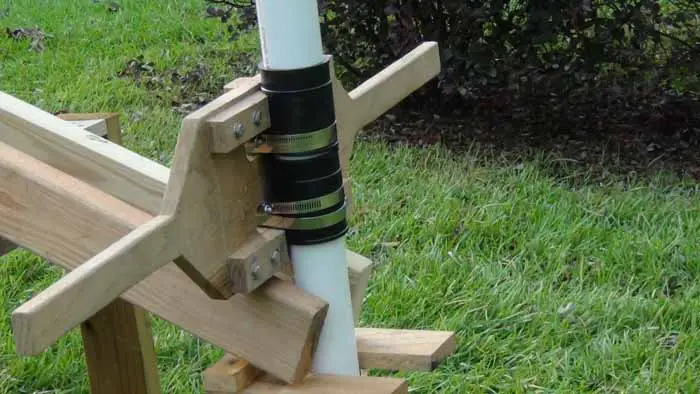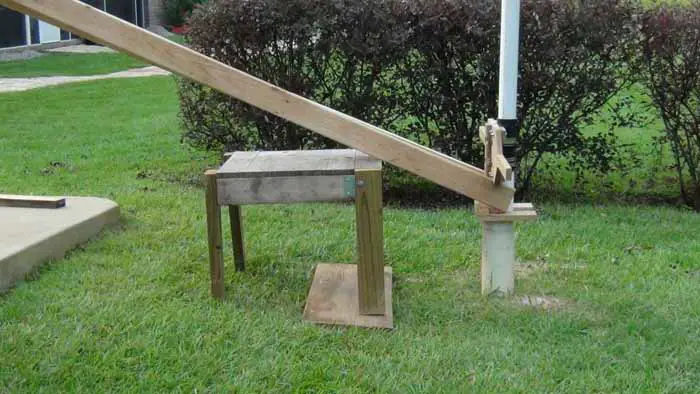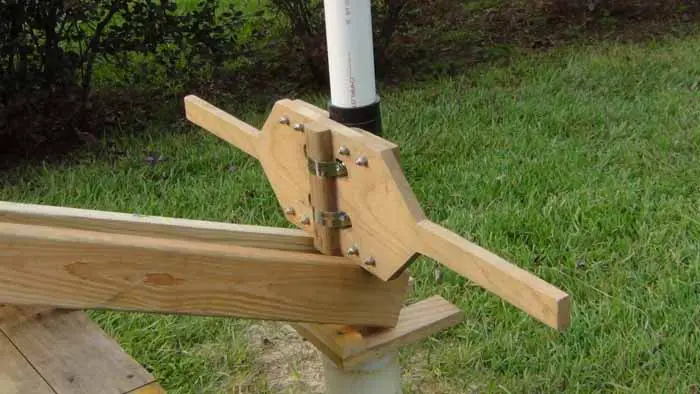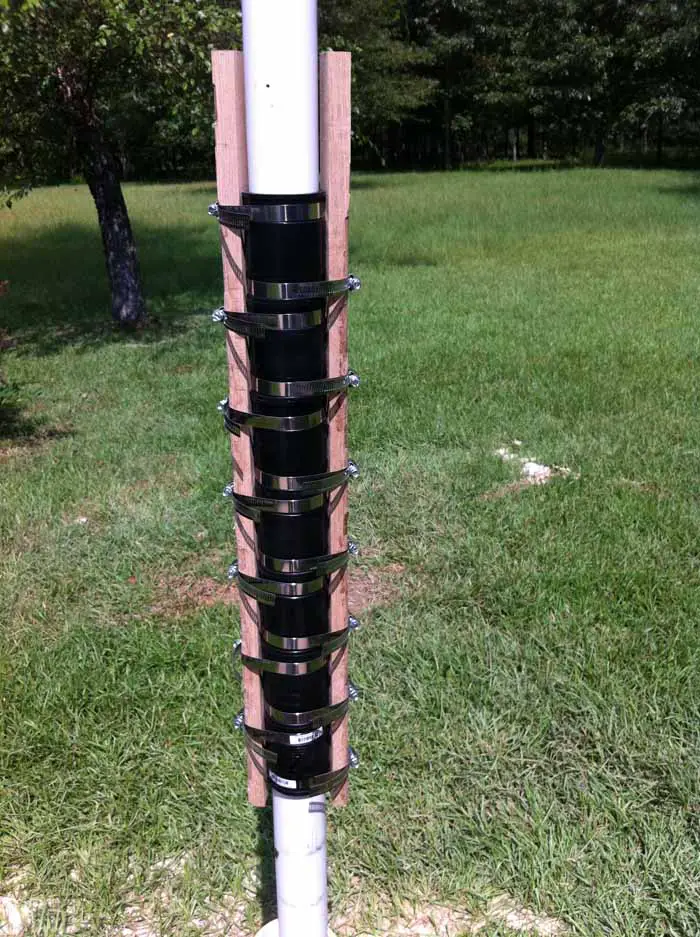IF WHEN THE PIPE STICKS
I have gotten well over a hundred e-mails from folks wanting to know what to do when the pipe sticks. So, I apologize for not having worked this out and posted it earlier. I kind of had the solution bouncing around in the vast open space between my ears for a while but I had not yet used the technique to free a pipe. Accordingly, I was hesitant to post it.
Well, (pun intended) this summer (2013) I stuck a pipe quite thoroughly. I drilled 35 feet on the first day without any problems. I was using bentonite so at the end of the day, with the pipe quite loose, I decided to leave it in the ground. The next morning when I resumed drilling, the pipe was perfectly free. It was just like I left it the day before. Nice, huh?
The second day, I drilled on to 68 feet. Again, I used plenty of bentonite. The earth between 35 and 68 feet was really soft, almost pure sand all the way. That should have been a clue to me! At the end of the second day the pipe was so free in the ground I could work it up and down with a couple of fingers. Given my experience the previous night, I figured I could leave it in the ground for another night. I propped it up about three feet off the bottom of the hole and quit for the day.
– big mistake –
The next morning I absolutely could not budge it. I twisted it. I turned it. I got help and with all the folks I could round up, we still could not pull that pipe up an inch. I tried pumping water down the pipe and it blew the drillhead off. Nothing worked.

STUCK PIPE
The original title for this page was, “IF THE PIPE STICKS.” After thinking about it I changed it to “WHEN THE PIPE STICKS” because if you drill enough wells you will stick the pipe at some point. Its just gonna happen. Guaranteed.
Real well drillers have powerful gasoline engine powered hydraulic jacks built into the derricks mounted on the back of their trucks to pull the pipe out of the ground. Even the small drilling rigs are routinely capable of putting 20,000 pounds upward pull on the pipe. I don’t know about you but, on a good day I can, for a fleeting instant, put about 200 pounds upward pressure on a pipe. As you may have already discovered (since you are reading this!), that just ain’t enough.
There are several techniques you can use to pull the pipe up so please don’t feel restricted by my suggestions below. I have tried to present a lever system, something that most folks can construct and operate. Other ideas include a winch, a block and tackle pulley system, and vehicle jacks, both mechanical and hydraulic. For our purposes, I think a simple lever will be easiest. It is likely also the cheapest.
The Greek mathemetician Archimedes said, “Give me a lever long enough, a fulcrum strong enough and I’ll move the world.” I kind of wonder if he was a driller too….
There are two primary issues involved in putting upward force on the pipe. The first is getting a good grip on the pipe. I find when the pipe sticks and I twist and push upward on the handle, the handle tends to slip upward on the pipe. So the first thing we want to try is improving the grip the handle has on the pipe. Fortunately, a two inch flexible coupler is perfect for this.
Below is a photograph of a a couple flexible two inch couplers from Lowes. The flexible coupler is item number 22473 and costs $4.33 The rubber sleeve fits perfectly over our two inch pipe. Slide it on to your pipe and then mount your handle on it, as shown in the photo below.

RUBBER SLEEVE WITH HANDLE MOUNTED
That piece of wood on the bottom is just a piece I use to keep stuff from slipping down inside the guide pipe. It has saved several tools and clamps from certain burial.
The second primary issue is putting upward force using a lever. You’ll need to come up with something stable to use as a fulcrum for the lever. I use a small table with a board under the load bearing legs. It is shown below.

TABLE USED AS FULCRUM
Next you’ll need the lever itself. Since we want to apply equal pressure to both sides of the handle, I like to use two 2″ X 4″ boards as shown below.

READY TO PRY
Next you simply pry the pipe up. The closer you have the fulcrum (table) to the pipe then the more leverage you have. Take the photograph above. The table is about about a foot from the handle/pipe. Since the pry boards are eight feet long, there is an eight to one (8/1) mechanical advantage. If I can apply 150 pounds of downward pressure on the lever, the upward pressure on the pipe will be 1200 pounds. By moving the fulcrum closer to the pipe, say four inches, the mechanical advantage becomes 24 to one. With that kind of leverage, even my old weak ass can apply 3600 pounds upward pressure on the pipe!
This brings us to our next problem. If we put that much upward pressure on the handle, it could still slip, even with the handle held to the pipe with four pipe clamps mounted to rubber. For this problem we simply need to improve our system of mounting the boards we are prying to the pipe.
Here is the system I used. I put seven of the two inch sleeves with a two inch wide piece of oak on each side. One pipe clamp holds each sleeve to the piece of oak. It is a bit cumbersome to move the clamps/sleeves,oak pieces down a few inches between pry, but it is very strong and works quite well. A photograph of the setup is shown below.

IMPROVED PIPE MOUNT FOR PRYING
A video showing the system in action on an actual stuck pipe is below:
I have heard from folks who used backhoes, tractors, and vehicle mounted winches. If you come up with a good system you think others might be able to use, please send me pictures and I will post them!
 drillyourownwell.com
drillyourownwell.com